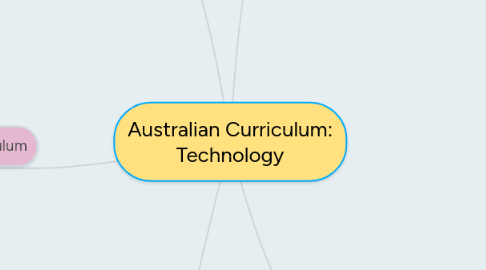
1. Band Levels: Australian Curriculum
1.1. Foundation to Year 2
1.1.1. By the end of year two students have explored design and technology within familiar contexts. Students pose questions about the use of products and their design.
1.2. Year 3 to Year 4
1.2.1. By the end of year four, students have investigated influences on design, including sustainable and technical factors. Students are using design and technology as a tool for collection and interpretation of data.Students are also required to explain the design of their world around them and the purpose of products design.
1.3. Year 5 to Year 6
1.3.1. By the end of Year 6 students describe some competing considerations in the design of products, services and environments taking into account sustainability. They describe how design and technologies contribute to meeting present and future needs. Students explain how the features of technologies impact on designed solutions for each of the prescribed technologies contexts.
2. ACARA vs. SCSA Their differences
2.1. ACARA provides a banding system in which multiple year levels fall into. The WA Curriculum provides a more tailored approach to each year level.
2.2. The WA Curriculum provides judging standards for teachers to utilise for assessment
3. The Major Ides of the Technology Curriculum
3.1. Creating Solutions
3.2. Project Management
3.3. ICT
3.4. Safety
3.5. Ethics (Animal)
3.6. Thinking in Technology
4. Structure of the Curriculum
4.1. Learning Areas
4.1.1. Design and Technology
4.1.1.1. Engineering Principles and Systems and Food and Fibre Productions
4.1.1.2. Food Specialisations and Materials and Technologies Specialisations
4.1.1.3. Investigate and Define
4.1.1.4. Design and Generate
4.1.1.5. Produce and Implement
4.1.1.6. Evaluate
4.1.1.7. Collaborate and Manage
4.1.2. Digital Technologies
4.1.2.1. Varied ways of representing data.
4.1.2.2. Investigate and Define
4.1.2.3. Design and Generate
4.1.2.4. Produce and Implement
4.1.2.5. Evaluate
4.1.2.6. Collaborate and Manage
4.2. Learning Strands
4.2.1. Knowledge and Understanding
4.2.2. Processes and Production Skills
5. Links to Other Learning Areas
5.1. General Capabilites
5.1.1. Literacy, Numeracy, ICT, Critical and Creative Thinking, Social and Personal Capabilities, Ethical and Intercultural Understandings.
5.2. Cross-Curricular Priorities
5.2.1. Aboriginal and Torres Straight Islander History and Culture, Asia and Australia's Engagement with Asia and Sustainability
5.3. Links to Other Learning Areas
5.3.1. Literacy
5.3.1.1. For Example: Explaining and Reflecting on collected data.
5.3.2. Numeracy
5.3.2.1. For Example: Collection and Representation of Numerical Data
5.3.3. HASS
5.3.3.1. For Example: Comparing data of different countries or historical events
5.3.4. Science
5.3.4.1. For Example: Collecting and Displaying data from scientific experiments
5.3.5. The Arts
5.3.5.1. For Example: Drafting, Writing and Editing a movie or production.
5.3.6. Health and Physical Education
5.3.6.1. For Example: food technologies
